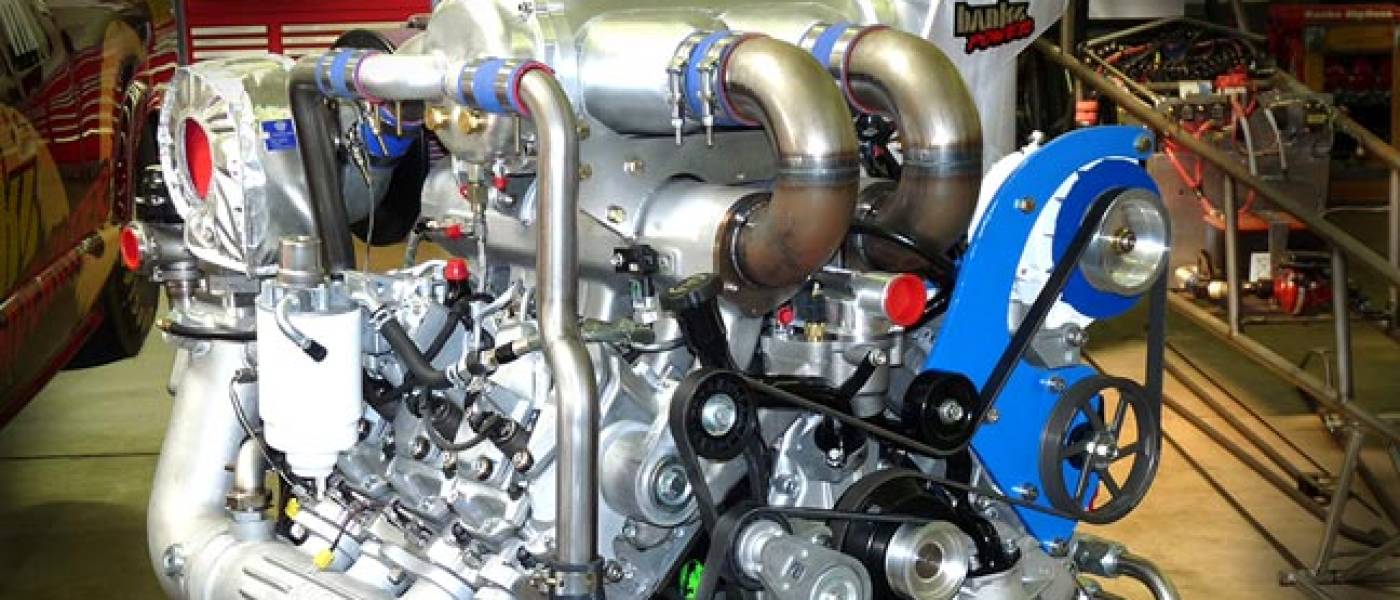Duramax Twin Turbo Marine Variant
So what did it do anyways?
By John Espino
Duramax Twin Turbo Marine variant: So what did it do anyways?

For the past few weeks I’ve been reporting about our development of the Duramax 6.6 liter engine for marine usage, and its two forms: the Twin Turbo and the (all-powerful) Sequential Super Twin Turbo variants. We’ve seen the polished and painted photos of the finished concepts, but really… I prefer the raw look of the prototypes. You can see what went on in the making of the things, and they look super-hero strong. Hearing them come to life and seeing them on video is another treat, because these aren’t just mock-ups of someone’s dream engine, they live and breathe unlike other’s we’ve seen. Unlike them… there’s no waiting for the Blue Fairy to grant the wish and make it a real engine.
Since the first version was the Twin Turbo, I’ve focused on that one. Last week we posted a video of the installation, first fire and dyno pull of that engine (check it out). Well, what did it do? I’m glad you asked.
First let me explain that the engine was designed and built for longevity while being able to provide full power for long stretches of time at wide open throttle. Let’s face it, life for an engine on the high seas is much harder than one that lives in a motor vehicle that just goes up and down the road. Yeah, there’s lots of stop and go traffic situations, but when you really look at the big picture the demand on the engine isn’t as severe as it would be in a boat. There, even in the most slippery of hull designs, the engine must power the craft through constant resistance at a constant speed set by the operator. I’ll paint a picture for your mind: it’s kind of like you swimming, only though thick mud… for hours. You get tired swimming in a normal pool of water, and it is considered exercise. An engine has to do it for much longer. Imagine the fatigue? Now I’ll set another scene for you to imagine, something off of a magazine cover: A guy has a super slick boat with a few gorgeous bikini clad women behind him soaking up the sun. The guy takes the throttle, cranks it up and sets it into place, pulls out a cold one from the cooler and turns to attend to the ladies. Do you really think that he’s concerned about the engine or how long it’s going to run? Nah… not on your life, but yet the engine now has a constant demand on it and a job to do. A regular automotive-purpose built engine used in your car or truck won’t last long under the stressful conditions of life at sea, simply because it just wasn’t meant to. Marine engines are built with components that resemble automotive-grade ones, but look alike parts just aren’t rugged enough. Oil pumps, cooling systems, cranks, rods… even the material in which parts are made of have to stand up to the corrosive nature of salty sea water.
All that said when you think about the fact that the engine cranked out nominally 600 hp it’s quite a feat, especially when it’ll do it all day long. We were able to ring out another 100 hp, but that was pushing it with more boost and fuel. Peak torque came in around 2,600 RPM @ 875 lb-ft, and carried out to about 3,800 RPM. All this while maintaining cool temperatures, staying reliable, and oh yes… staying clean. No smoke boys and girls! All of the fuel is used in the engine… the way God intended it to be. So besides being built rock solid and producing Hulk-like staying power it gets great economy due to the calibration in the ECM.

And speaking of the ECM… all of its brains are ours. The Banks ECM may be built off of rock-solid Bosch electronic components but all of the code in it, some 2000 plus variables, are genuine Banks. What am I saying? The brain that controls the engine is not a truck ECM that’s been hacked or programmed. Its primary purpose is marine, and it’s all business.
So what you ask would posses us to integrate a blower on to the engine if the thing is so buff as it is? A few reasons, really. One of which is where the power comes in. This configuration is strongest and most efficient in mid range to top end, but when the low-end grunt to “get out of Dodge” is needed this package needed a little more firepower… which leads me to next week’s story. Till then, have a great weekend.

